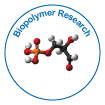Advancing Sustainability: A Novel Biopolymer-Based Degradable Nanoclay Composite Film for Next-Generation Packaging
Received: 01-Apr-2025 / Manuscript No. bsh-25-164483 / Editor assigned: 03-Apr-2025 / PreQC No. bsh-25-164483 / Reviewed: 17-Apr-2025 / QC No. bsh-25-164483 / Revised: 24-Apr-2025 / Manuscript No. bsh-25-164483 / Published Date: 28-Apr-2025 DOI: 10.4172/bsh.1000261
Abstract
Keywords:
Keywords
Biopolymer-based films; Montmorillonite nanoclay chitosan-xanthan gum blend; Barrier properties; Biodegradability; Sustainable food packaging
Introduction
The increasing environmental concerns associated with the excessive use of non-degradable, petroleum-based plastics especially in food packaging have created a pressing need for sustainable alternatives. These conventional plastics contribute significantly to global pollution and waste management problems. In response, biopolymer-based packaging materials have gained attention due to their biodegradability, renewability, and lower environmental footprint. However, many biopolymers on their own lack the necessary mechanical strength and barrier properties required for effective food packaging [1]. To overcome these limitations, the incorporation of nanomaterials such as montmorillonite (MMT) nanoclay has emerged as a promising strategy. MMT offers advantages like high surface area and excellent reinforcing capabilities, which can significantly enhance the performance of biopolymer films. In this study, two different chitosan-based biopolymer blends chitosan–xanthan gum and chitosan vanillin were used as film matrices [2]. MMT nanoclay was added to these blends to develop bio-nanocomposite films with improved functionality. The research aims to explore the potential of these materials as sustainable, degradable alternatives for next-generation food packaging applications.
Discussion
The study titled "Advancing Sustainability: A Novel Biopolymer-Based Degradable Nanoclay Composite Film for Next-Generation Packaging" presents an in-depth analysis of bio-nanocomposite films developed by incorporating montmorillonite (MMT) nanoclay into chitosan-based blends. The research focuses on optimizing the mechanical, barrier, and biodegradability properties of these films for sustainable food packaging applications. Film Formation and Optimization: The solution casting method was employed to fabricate the films, utilizing chitosan as the primary matrix blended with xanthan gum or vanillin. Incorporating 0.5% xanthan gum or 1% vanillin resulted in films with improved mechanical properties [3-5]. Further addition of MMT nanoclay (up to 3%) enhanced tensile strength and water resistance without compromising film flexibility. Mechanical Properties the tensile strength of the chitosan–vanillin blend film with 3% MMT nanoclay (CVM3) exhibited a remarkable 6.64-fold increase compared to pure chitosan film. This enhancement is attributed to the uniform dispersion of MMT nanoclay within the biopolymer matrix, leading to improved interfacial interactions and reinforcement [6]. Barrier Properties films incorporating MMT nanoclay demonstrated superior barrier properties against water vapor and oxygen transmission. CVM3, for instance, showed a 56.16% improvement in water vapor barrier performance compared to pure chitosan film, making it a suitable candidate for preserving moisture-sensitive food items [7-9]. UV Protection: The inclusion of MMT nanoclay enhanced the UV-blocking capacity of the films. CVM3 exhibited increased absorption across the UV spectrum, offering potential protection for UV-sensitive food products. Biodegradability: The films demonstrated promising biodegradability, with CVM3 showing a 25% weight loss within the first month under soil burial conditions [10]. This characteristic underscores the environmental friendliness of the developed materials.
Conclusion
The study successfully developed chitosan-based nanocomposite films reinforced with MMT nanoclay, achieving significant improvements in mechanical strength, barrier properties, UV protection, and biodegradability. Among the formulations, CVM3 (chitosan–vanillin blend with 3% MMT nanoclay) emerged as the most promising candidate for sustainable food packaging applications. These advancements align with the growing demand for eco-friendly packaging solutions that do not compromise on performance.
References
- Rose MT, Cavagnaro TR, Scanlan CA (2016)Impact of herbicides on soil biology and function. Adv Agron 136: 133–221.
- Kumar V, Upadhyay N, Kumar V, Sharma S (2016) A review on sample preparation and chromatographic determination of acephate and methamidophos in different samples. Review, Arabian Journal of Chemistry, vol. 8, pp. 624–631.
- Sporring S, Bowadt S, Svensmark B, Bjorklund E (2005 ) Comprehensive comparison of classic soxhlet extraction with soxtec extraction, ultrasonication extraction, supercritical fluid extraction, microwave assisted extraction and accelerated solvent extraction for the determination of polychlorinated biphenyls in soil, J Chromatogr 7: 1–9.
- Mostafa GAE (2010) Electrochemical biosensors for the detection of pesticides. The Open Electrochem J 2: 22–42.
- Balootaki PA, Hassanshahian M (2014) Microbial biosensor for marine environments. Review. Bulle Envi Pharma Life Sci 3: 01–13.
- Lei Y, Chen W, Mulchandani A (2006) Microbial biosensors. Review. Anal Chim Acta 568: 200– 210.
- Kim H, Ding Z, Lee MH, Lim K, Yoon G, et al. (2016)Recent Progress in Electrode Materials for Sodium-Ion Batteries. Adv Energy Mater 6: 1600943-1600945.
- Petri R, Giebel T, Zhang B, Schünemann JH, Herrmann C, ET AL. (2015)Material cost model for innovative li-ion battery cells in electric vehicle applications. Int J Precis Eng Manuf Green Technol 2: 263-268.
- Rempel J, Barnett B, Hyung Y (2013)Battery Cost Assessment. In Proceedings of the TIAX LLC, Lexington, KY, USA 14.
- Ellingsen LAW, Majeau-Bettez G, Singh B, Srivastava AK, Valøen LO, et al. (2014)A H Life Cycle Assessment of a Lithium-Ion Battery Vehicle Pack: LCA of a Li-Ion Battery Vehicle Pack. J Ind Ecol 18: 113-124.
Indexed at, Google Scholar, Crossref
Indexed at, Google Scholar, Crossref
Citation: Liaoyuan S (2025) Advancing Sustainability: A Novel Biopolymer- Based Degradable Nanoclay Composite Film for Next-Generation Packaging. Biopolymers Res 9: 261. DOI: 10.4172/bsh.1000261
Copyright: © 2025 Liaoyuan S. This is an open-access article distributed under the terms of the Creative Commons Attribution License, which permits unrestricted use, distribution, and reproduction in any medium, provided the original author and source are credited.
Select your language of interest to view the total content in your interested language
Share This Article
Recommended Journals
Open Access Journals
Article Tools
Article Usage
- Total views: 529
- [From(publication date): 0-0 - Oct 16, 2025]
- Breakdown by view type
- HTML page views: 444
- PDF downloads: 85
